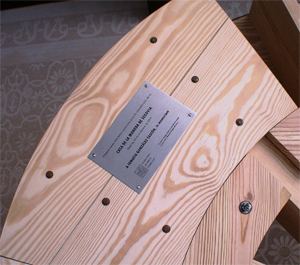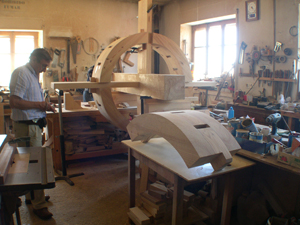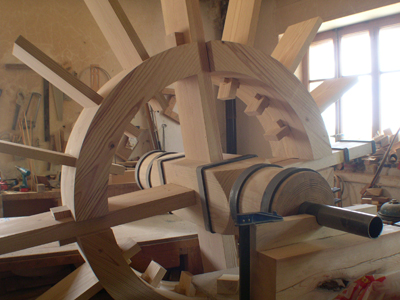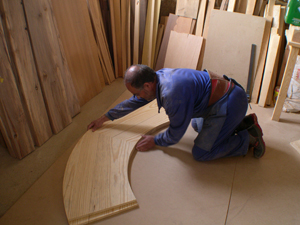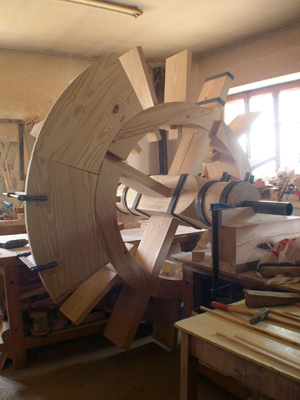Se han utilizado las siguientes fuentes para obtener información de las características de las ruedas e ingenios:
- Los documentos escritos, principalmente informes y memorias redactados cuando fue necesaria la renovación o reparo de las instalaciones de Segovia. De las ruedas de nuestra ceca no se dispone de ningún plano u otro tipo de imagen que las definan pero si que contamos con los huecos en el muro por donde pasaban los árboles de las ruedas que nos informan sobre niveles y diámetros máximos.
- Otros documentos textuales referentes a la Ceca de Cuenca, que como sabemos fue construida en 1661 tomando como modelo la de Segovia. De esta ceca sí se dispone de un magnifico plano de su planta, elaborado con gran nivel de detalle, a escala conocida y en él aparecen claramente dibujados el sistema de canales, las ruedas hidráulicas con sus saetines, los ingenios de laminar y acuñar y los de la herrería.
Las características y dimensiones que se observan en él, son coincidentes con las informaciones sobre el Ingenio de Segovia, por lo que podemos considerar este plano como una buena fuente de información sobre las instalaciones segovianas. Decidimos que para la primera rueda prototipo era mejor experimentar con una de las pequeñas de la herrería. La rueda del torno, la más grande de las tres fue la elegida.







